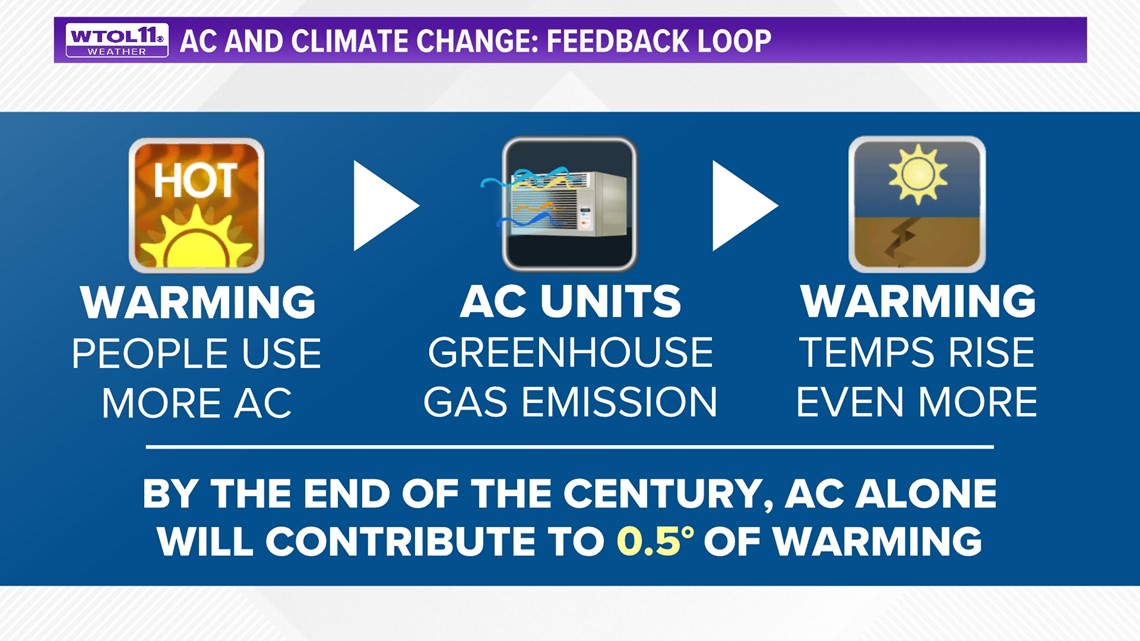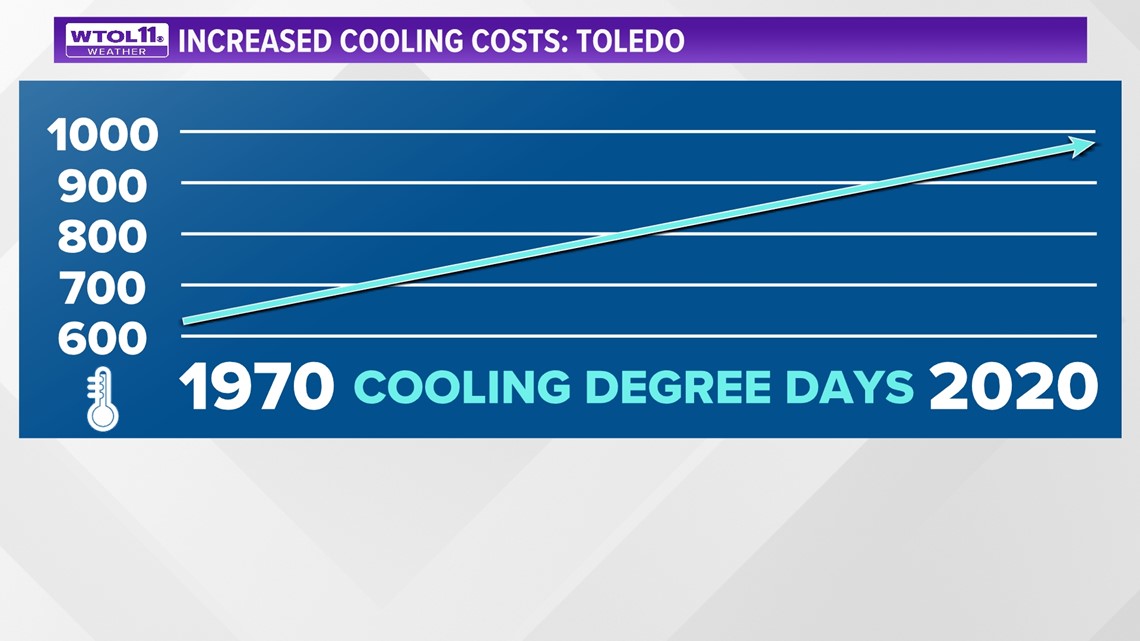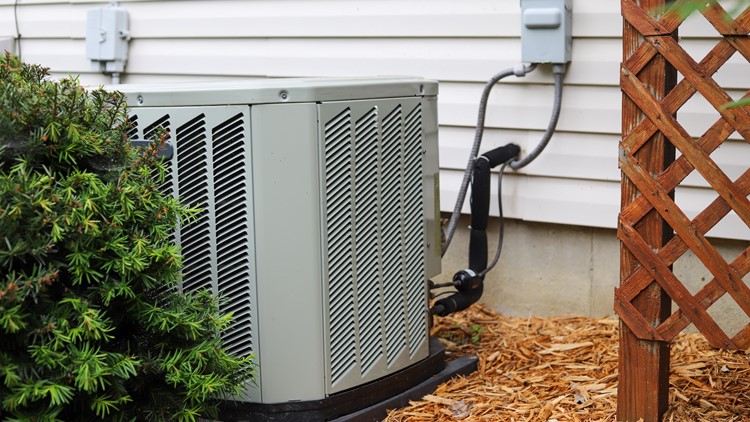TOLEDO, Ohio — Have you cranked up the air conditioning this summer? You’re not alone.
If you’ve felt the cost of a rising electric bill, the weather may be to blame. While Midwesterners are no strangers to summer heat and air conditioning, they have felt an increasing burden of electricity costs due to climate change.
In this week’s Climate Friday, we’ll delve deeper into the impacts of global warming on your AC unit and electric bill.
Summer started off with a warm June, which featured seven days in the 90s and a record-tying 100-degree day on June 21, our hottest temperature in a decade. As a whole, June was nearly two degrees above average.


Comparatively, June 2021 was 2.5 degrees above average and June 2020 was 2.8 hotter than normal. This warming trend is getting more common with climate change, and that’s bad news for your wallet.
You may be familiar with the term “cooling degree days”, or “CDD” from your electric bill. Cooling degree days are a measure of the outdoor air temperature compared to a standard reading, usually 65 degrees.
Each degree of departure from that standard equates to one cooling degree day. A daily average temperature of 75 degrees, for example, represents 10 cooling degree days. Hotter summers are associated with more cooling degree days and rising cooling costs, just as colder winters are represented by more heating degree days and rising heating costs.


If you compare your summer electric bills to those from past years, you can see for yourself the relationship between cooling degree days and electricity cost.
Scientists look for changes in cooling degree days over the years as a symptom of climate change. Not surprisingly, the results of this analysis fit within the framework of global warming.
In the 1970s, Toledo saw an average of just over 600 cooling degree days per year. In the last 50 years, that number has gone up 50%, climbing to near 1,000 cooling degree days annually. In other words, air conditioning units are getting more use due to increasing summer temperatures.
The more cooling degree days, the higher your electric bill. This trend scientists have observed over the past century or more is one you’ve inevitably felt in your wallet.
While summer heat will grow more intense in the future, putting even more of a burden on your electric bill, there are steps you can take to cut costs. For starters, cover up your windows with blinds or blackout curtains. This prevents heat from the Sun from entering your home.
Another tip: Create an indoor breeze with a fan, placing it in the coolest part of your home pointed toward the warmest room. You can even put a bowl of ice cubes behind the fan to help circulate chilly air.
Last but not least, change how you cook and dine by grilling outside instead of using the oven, which emits heat and warms the entire house. Eating lukewarm or cold food can make you feel a bit cooler.
You can get creative and think up a host of other strategies to keep your home or apartment cool without air conditioning.
The hot weather pattern will continue into the start of July, and you'll need to crank up the AC on July 4.
Trust the WTOL 11 weather team all summer long as we share tips for you to save money and reduce your carbon footprint to combat climate change.
RELATED VIDEO



